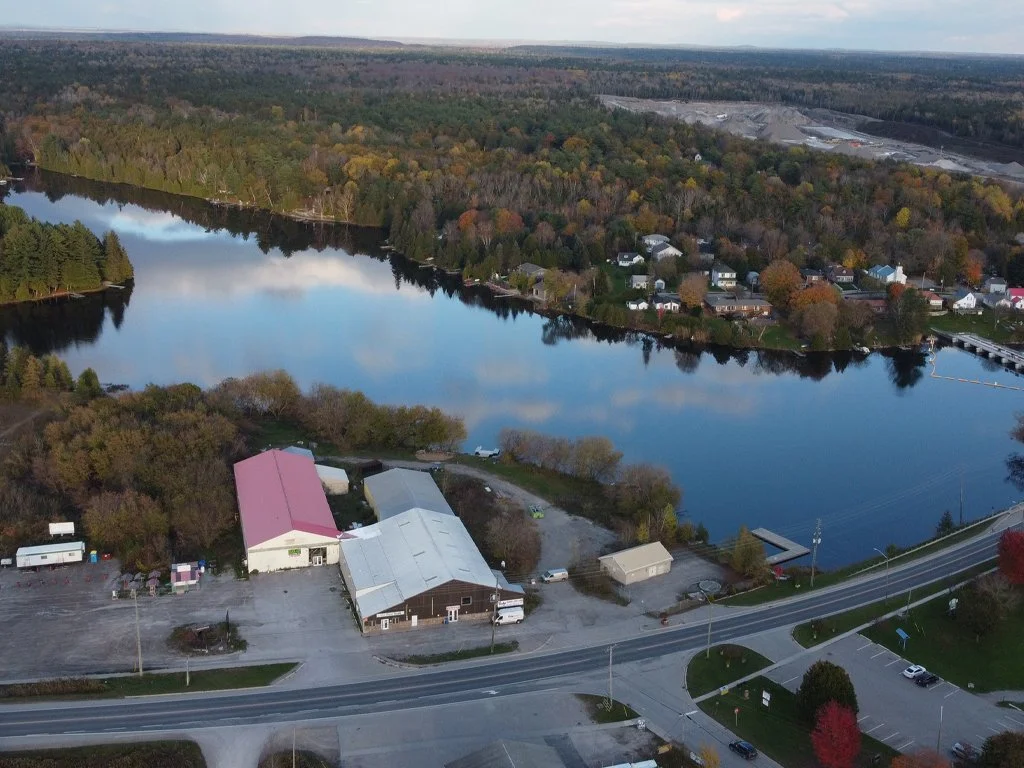Coboconk’s VicPly Factory
As Coboconk was situated on the Gull River, a large proportion of the timber floated down the Trent Watershed in the late nineteenth century passed through the village—some would float as far as Trenton. In 1913, the Gull River Lumber Company built a large sawmill, on the shore of the Gull River, opposite the railway station. It was a perfect location, as logs could be floated in, and the produce conveniently located on cars for export. It was built just as automobiles were beginning to appear in the region. Hauling logs on a truck was much more convenient than floating them down the river and the last drive passed through town in 1929. Within a few years the sawmill closed, in the midst of the Great Depression. The old sawmill later became a basket factory, producing many wooden fruit baskets, before burning on June 20, 1957.
One year after Coboconk’s landmark sawmill went up in smoke, the Salaman family opened a new factory, Quality Plywood, on the same site. At the plywood factory, maple logs were turned on a lathe to produce continuous sheets of veneer. Once clipped to length, they were glued together to produce thin plywood panelling in 4x7 foot sheets. Much of it was shipped to the nearby Beautiwood factory, where it was finished and sold as panelling.
The factory closed briefly, then John Hickey purchased it and renamed it VicPly. When he took over the factory, it was producing approximately 300 sheets of plywood per day in a domed-roof building beside the river. He added an office and storage building, located to the north, closer to the highway, and then a second storage building. In the decades that followed, the building expanded until it produced about 2400 sheets daily, with 68 employees. For a village like Coboconk, this made it a major employer.
VicPly sold much of its produce wholesale to lumber yards and furniture companies. Palliser Furniture of Winnipeg was an important customer, as was Lindsay’s Northern Casket. With such a convenient rail connection, plywood was shipped as far away as Vancouver. In later years, shipping was via tractor trailer, which often picked up particle core or MDF from mills in Northern Ontario on the return trip—which was sandwiched between the veneers to make plywood at VicPly.
Early in the morning on October 14, 1981, VicPly caught on fire. The factory had been reduced from running round the clock to two shifts, so it was not operating at the time. As smoke was once again billowing from the plant beside the Gull River, an era was coming to an end. Though it was very important to the village, John owned other, larger, plywood factories. He did not need to rebuild and instead shifted production to other locations, such as Fergus and Montreal. The office and storage buildings survived, and have been reincarnated as Coby’s Buck and Up.



